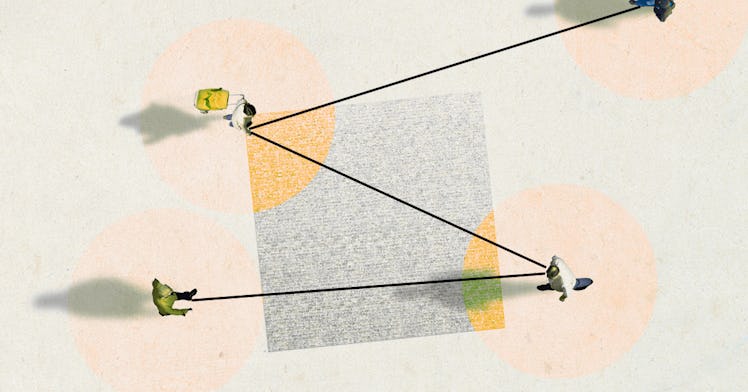Contact Tracing: What Families Need To Know
What is it? Do we really need it? And does it violate privacy?

The fight against COVID-19 is being fought through many efforts and on many fronts. While researchers race to find a vaccine that could prevent the future spread of this new virus and create antibody tests, states enact shelter-in-place and social distancing orders to flatten the curve and help hospitals fight this virus without being overwhelmed, and politicians work to release funding for the many million unemployed Americans who have no income for the foreseeable future, another word has floated into the lexicon of the COVID battle: contact tracing.
Contact tracing was used in the Ebola outbreak to stop the very grim disease from taking hold in the United States and has been used in many other public health outbreaks in the past. Several states, including Washington, California, and New York have announced that they would launch their own contact tracing task forces to aid the fight against the virus. But what is it? Is it effective? Does it harm the family’s privacy? And do we really need it?
What Contact Tracing Is
Contact tracing is simple enough. Basically, what a contact tracer does is interview people who are confirmed to have some kind of viral infection or disease — in this case, obviously, COVID-19 — and ask them who they’ve come into contact with over the past few weeks. In the case of COVID-19, it could mean anyone who they’ve stood within 6 feet of for over 10 minutes, or in a hospital setting, 5 minutes. (This 10-minute figure comes from Dr. Laura Breeher, medical director of occupational health services at the Mayo Clinic. It was published in TIME.)
So, assuming all of this is accurate when contact tracers figure out who the ill person has come into contact with, they then reach out to all of those people and ask them to shelter in place or quarantine for the next two weeks to ensure that they do not have COVID-19 or to limit exposure to others if they are an asymptomatic carrier. It’s been used during many pandemics and epidemics and other outbreaks and could be utilized during COVID-19.
Is Contact Tracing Effective?
In general, contact tracing is a really good preventative health tool that helps stop massive spreads of viral infections, STIs, or other disease outbreaks before they really get into full swing. But contact tracing might be a little bit more difficult during COVID-19, given that at least 1 in 4 people who have the disease have absolutely no symptoms whatsoever. This means that someone who has passed the virus to others may not even realize they have done so or are sick, and they may not show up on anyone’s ‘contact trace’ list.
It also takes a lot of work to determine who has come into contact with someone who is sick with COVID-19, and it’s best done in the early stages of a viral outbreak — which the United States, and the world in general, has clearly moved well-past. There are so many sick people in, say, New York State, that it would be extremely difficult to reach out to every single person one of the over 250,000 people who have gotten sick with the illness in the state has come into contact with. At that point, experts suggest that widespread measures of social distancing and quarantining are a better, more effective, and more efficient way to stop the spread of a virus.
Does It Violate Privacy?
Several private companies have launched privatized efforts to start databases and launch new tech that can help with contact tracing. Apple and Google have added software to their smartphones that would help the contact tracing efforts. Google says that there is no personally identifiable information that gets passed along to tech companies. Microsoft also launched its own initiative.
Digital tools would need to be expanded significantly in order to ramp up contact tracing efforts in the United States, otherwise, some 100,000 federal workers would need to be hired to keep up with the efforts. But given that it has been used before — almost 30,000 people in the United States who had recently traveled to West Africa during the Ebola outbreak were monitored via contact tracing — there doesn’t seem to be a reason that it would violate the privacy of individuals. Still, getting a notification on your phone that you might have come into contact with someone with COVID does feel pretty Big-Brother-y. Also, given that most health care workers are doing the contact tracing interviews, there might even be HIPAA regulations on the practice.
Do We Really Need It?
When America really needed contact tracing was about two months ago when the first known cases of COVID-19 cropped up in February in California. Now, with the vast majority of citizens sheltering in place, isolating, and social distancing, and the spread of the pandemic well along, contact tracing en masse will likely not be the best use of resources for an already stretched-thin health care system in the country.
That being said, contact tracing is still an extremely valuable practice in isolated outbreaks. For example, when outbreaks occur in retirement communities, contact tracers can isolate and stop the spread from hitting an entire retirement community. It might also be valuable in prisons, where the risk for incarcerated people is much higher than it is for those who are not. But at this point, right now, it might be better to enact mass testing and shelter-in-place orders for the time being and use contact tracing for further outbreaks down the line, which will be possible for as long as we don’t have a vaccine.